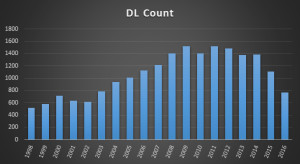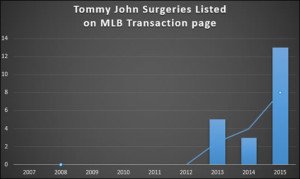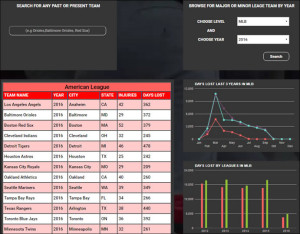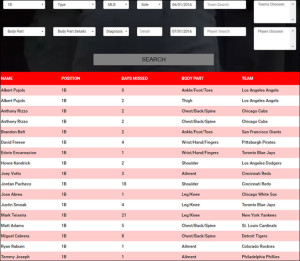Current estimates on the 2017 qualifying offer have it priced at $16.7MM, according to ESPN.com’s Buster Olney (Twitter link). That would represent a year-over-year rise of $900K.
That’s a rather standard increase for the qualifying offer, which is determined by averaging the league’s 125 contracts with the highest mean salaries. It sat at $15.8MM for the current year, after rising from $15.3MM in 2015, $14.1MM in 2014, and $13.3MM in the inaugural year of 2013.
Teams can offer their departing free agents a one-year deal, at the established price tag, within five days of the conclusion of the World Series. Over the next seven days, players who receive the offer are allowed to talk with other teams and decide whether to take the single-season pact. If they reject it, then draft implications attach: their former team stands to gain a compensation pick in the following year’s draft, while a new signing team must give up their highest non-protected draft choice.
The real question with the qualifying offer, though isn’t so much its specific price tag as it is the underlying rules. With a new collective bargaining agreement being negotiated at present, many have suggested that it’s one of the most important issues that is — or, at least, could be — on the table for change. Even if something gets done, though, it presumably wouldn’t go into effect for the coming offseason.
It’s not yet clear whether there’s any realistic possibility of modifications to a system that has had a notable dampening effect on the market experiences of numerous mid-level free agents in recent years. Players entering the market after declining the one-year qualifying offer come with the added cost of draft compensation. That has arguably forced certain good but not great players — those who have the toughest decisions to decline the QO — to shoulder an out-of-proportion piece of the dampening effect that the system imposes on player salaries.
Notably, this last offseason was the first in which any player accepted a qualifying offer — thus taking a one-year deal (admittedly, at a nice price) rather than rolling the dice on a stalled market situation. Matt Wieters of the Orioles, Brett Anderson of the Dodgers, and Colby Rasmus of the Astros all took the deal. The fact that some players have now elected to take the big one-year payday and re-enter the market could conceivably make teams think twice about slapping the offer on marginal candidates.
For those who aren’t familiar with the qualifying offer system, you can check out this old-but-good overview and read up on why “avoiding the qualifying offer” is so important for a free agent’s value.






